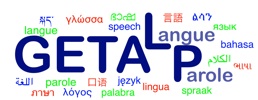Unraveling Spontaneous Speech Dimensions for Cross-Corpus ASR System Evaluation for French
Résumé
Many papers on speech processing use the term ’spontaneous speech’ as a catch-all term for situations like speaking
with a friend, being interviewed on radio/TV or giving a lecture. However, Automatic Speech Recognition (ASR)
systems performance seems to exhibit variation on this type of speech: the more spontaneous the speech, the
higher the WER (Word Error Rate). Our study focuses on better understanding the elements influencing the levels of
spontaneity in order to evaluate the relation between categories of spontaneity and ASR systems performance and
improve the recognition on those categories. We first analyzed the literature, listed and unraveled those elements,
and finally identified four axes: the situation of communication, the level of intimacy between speakers, the channel
and the type of communication. Then, we trained ASR systems and measured the impact of instances of face-to-face
interaction labeled with the previous dimensions (different levels of spontaneity) on WER. We made two axes vary
and found that both dimensions have an impact on the WER. The situation of communication seems to have the
biggest impact on spontaneity: ASR systems give better results for situations like an interview than for friends having
a conversation at home.
| Origine | Fichiers produits par l'(les) auteur(s) |
|---|

